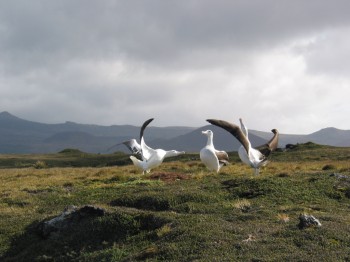Arie Trouwborst (Tilburg Law School, and Tilburg Sustainability Center, Tilburg University, The Netherlands) writing in the Journal of International Wildlife Law & Policy has looked at international law and migratory seabird conservation in polar regions in respect to climate change.
Selected parts of the paper’s introductory text follows:
“This article focuses on the role of international law with respect to migratory seabird conservation in polar ocean areas in light of climate change. It blends several topical international law challenges, particularly a convergence of the classical challenge of migratory bird conservation with the novel challenge of responding to the pervasive and growing impacts of climate change on species and ecosystems.”
“The fourth section addresses the CMS and its most pertinent ancillary instruments, particularly the African-Eurasian Waterbirds Agreement (AEWA), and the Agreement on the Conservation of Albatrosses and Petrels (ACAP).”
To access a related paper by the author click here.

Wandering Albatrosses display on Marion Island
Photograph by Marienne de Villiers
Reference:
Trouwborst, A. 2013. Bird conservation and climate change in the marine Arctic and Antarctic: classic and novel international law challenges converging in the polar regions. Journal of International Wildlife Law & Policy 16: 1-40.
John Cooper, ACAP Information Officer, 14 May 2013

 English
English  Français
Français  Español
Español